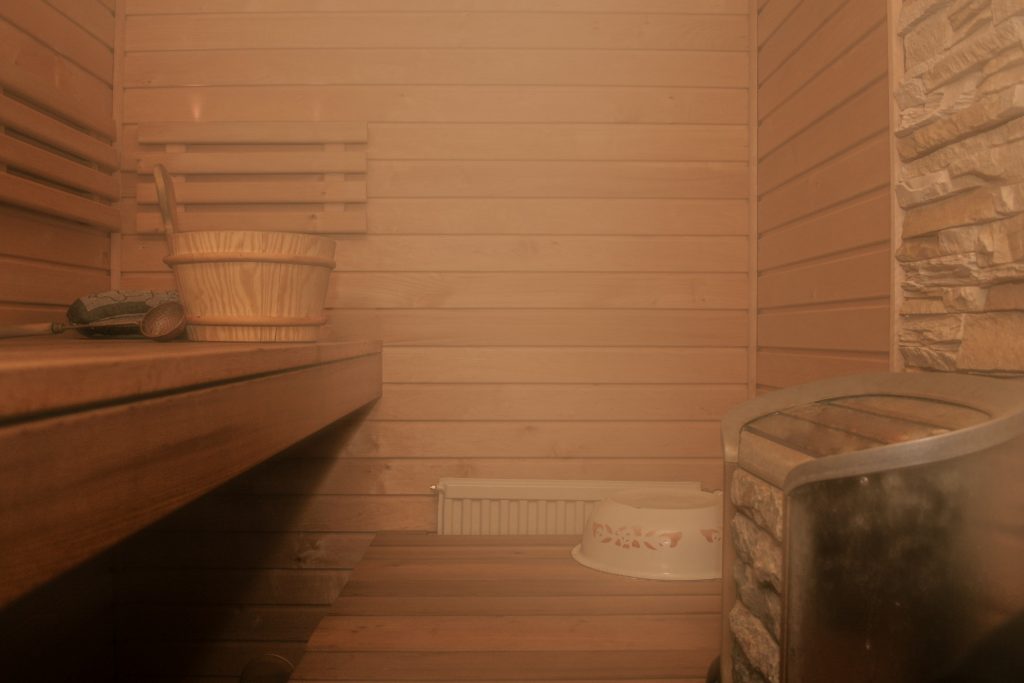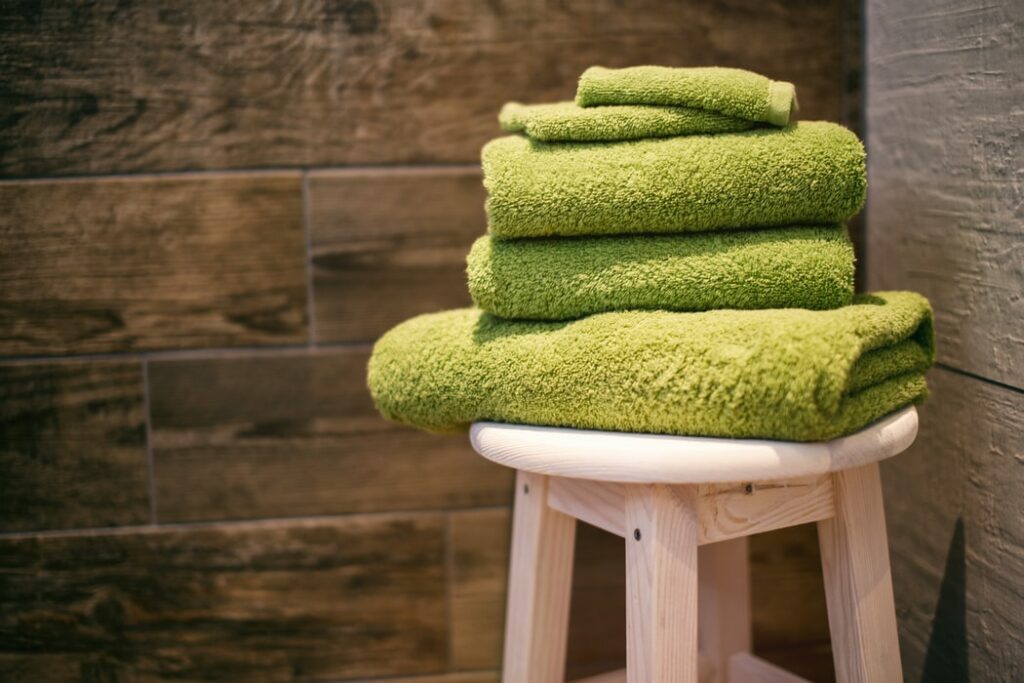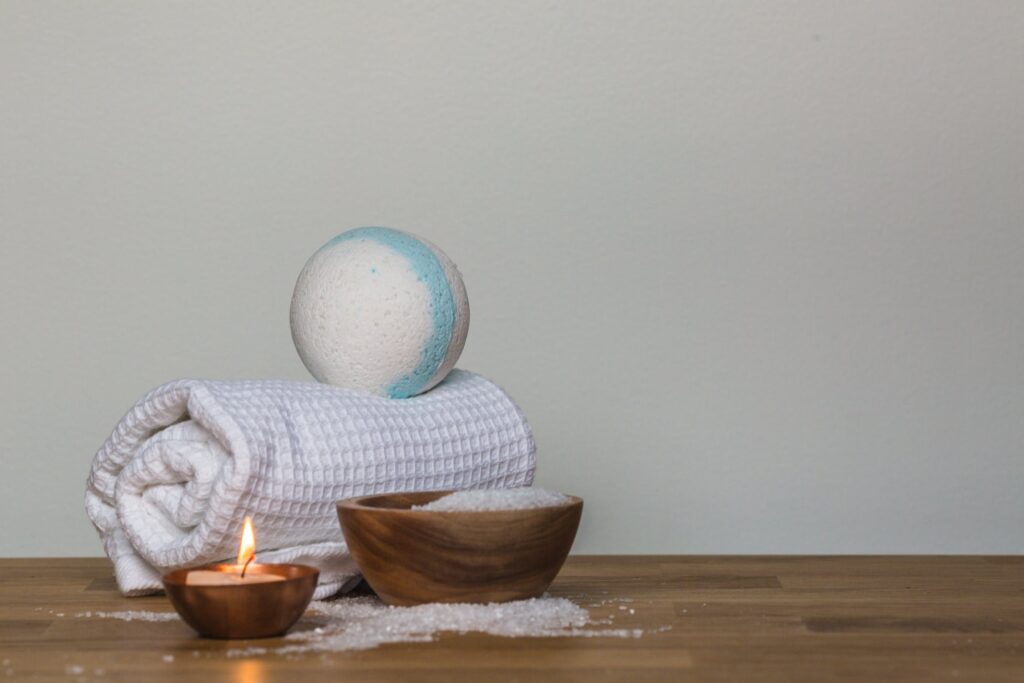The distinction between a steam room and a sauna may be summed up with a single phrase: dry versus wet. The heat that is generated in steam rooms is more humid than the heat that is provided by saunas. Both can help you relax by opening up your pores, loosening up your muscles, and releasing tension in your body. Which option is most suited to your needs? To a large extent, it is dependent on one's own preferences.
Both steam rooms and dry saunas ultimately have a similar beneficial effect on the body. Both can raise your body temperature, leading to perspiration and a faster heart rate. But there are enough distinctions between the two that many wonders which one is superior in a battle between the sauna and the steam room. The effects on the respiratory system of breathing either dry sauna air or wet steam are highly distinct from one another, and the moisture has a very different impact on the skin as well. This blog will compare and contrast the benefits of using a sauna and a steam room.
"Some people prefer to train in dry saunas, while others prefer to practice in steam, while others prefer to practice in hot tubs, and some people combine their practice with cold water immersion. If you are in good health and you prefer some kind of heat therapy, you should definitely try it. It won't be harmful in any way, and you might even discover that it's beneficial to include it as part of your regular fitness routine.
It's possible that by the time you've finished a strenuous workout and entered the locker room of your gym, you'll be longing for something a little less taxing than your HIIT class. And if your gym offers a sauna and a steam room, taking advantage of those facilities seems like an alluring way to wind down after a workout and ease the discomfort of aching muscles. The question is whether you should go inside the dry but extremely hot wooden box or the humid tile chamber loaded with steam. To be honest, the answer to that question is going to rely on what you hope to gain from the experience.
The technique in which heat is generated in a sauna and a steam room is the primary distinction between the two types of facilities. In a typical sauna, the air in the chamber made of cedar wood is heated by a specific burner. In contrast, an infrared sauna uses lamps that emit infrared light, which heats your body from the inside out. When water is heated to boiling in a steam room, hot steam is released into the surrounding air. Even while each of these three hot habitats has its own unique set of health benefits, they are all equally calming.
It would appear that going to a sauna on a regular basis is beneficial to your health, particularly for your cardiovascular system. A study that was published in 2018 in the Proceedings of the Mayo Clinic indicated that sauna bathing is associated with a range of benefits for the cardiovascular system, including a reduction in blood pressure. Your heart rate will also increase as a result of sitting in a sauna. The research from 2018 found that it causes you to perspire, which triggers the release of endorphins in a manner that is analogous to that of moderate or high-intensity physical activity. Since more blood is flowing to your muscles while your heart rate is higher, you might experience a momentary relief from the soreness in your muscles. According to Harvard Health Review, the air in a sauna is so dry that sweat evaporates more quickly on your skin, allowing you to endure the greater temperature (most saunas are heated to between 160 and 170 degrees Fahrenheit, according to the American College of Sports Medicine). As a result, you frequently wind up sweating a lot.
FAQs About Sauna
Do not use deodorant, lotions, makeup, or perfume prior to sauna session. Please bring a clean bathing suit or shorts. The infrared sauna will not work through clothing. Remain inside the sauna 20 -30 minutes at a time and rest for about 5 - 10 minutes afterwards.
Best Times for infrared sauna sessions are early in the morning or before bedtime in the evening, although anytime is good. When you first begin to use your infrared sauna, Start Slowly. After you begin to break a sweat, a 20 -30 minute session is recommended.
You can go to the sauna without getting your hair wet. However, be sure to protect your hair as hair does not withstand heat well. Especially hair that has been dyed or damaged needs protection. You can protect your hair by using a sauna hat, a dampened or dry towel.
Additionally, the light of infrared saunas travels much deeper into the body, meaning they are to cause a more vigorous sweat, despite the lower (and more comfortable) temperature.
Improves heart function: A study has shown that regular saunas may improve heart function in people with heart failure. Another study has shown that using a sauna 4-7 times a week can significantly lower the risk of sudden cardiac death and other heart diseases.
The Benefits of Steam Rooms
A steam room is a room that is almost completely airtight, and it is filled with steam that is produced by a steam generator. The steam room has a humidity level that is close to 100 percent. The walls and floor of a steam room are often covered in ceramic tile, and the slope of the ceiling is necessary to prevent condensation from falling from the ceiling onto the people using the room. The primary objective of steam rooms is to induce perspiration in bathers for the purpose of facilitating detox.
Alleviate congestion: According to Tobiason, "Steam has the benefit over both dry and infrared saunas when it comes to the stuffy nose sector." "The reduction of congestion in the upper respiratory tract is one of the most significant benefits. Inhaling steam, which is typically infused with eucalyptus oil, causes vasodilation in the sinuses, which in turn clears the nasal passages and relieves congestion." It's almost as if you're climbing into a giant diffuser for essential oils.
Tobiason provided a warning about the upcoming flu and cold season. It is important to keep in mind that using a public steam room when a large number of other people have runny noses increases the likelihood that you will "take up diseases and viruses from everyone who has the same notion." Alternatively, you might try one of these other natural treatments for sinus infections, such as taking a long, steamy shower while adding some eucalyptus essential oil to the water.
Effects on skin: Saunas and steam rooms cause you to sweat, which opens the pores in your skin, allows certain toxins to be released from your body and cleanses and rejuvenates your skin. Saunas and steam rooms. Acne sufferers may benefit from this because one of the reasons for acne is impurities in the skin, and this might help remove those impurities.
Reduces stress: Endorphins are known as the "feel-good" hormones because they enable the body to feel less stressed out when they are released, which is why being in a hot environment like a steam room can induce the body to release them.
In addition, the level of cortisol, which is the hormone that is produced in response to stress, can be lowered by using a steam room. People may experience a sense of being more in control, relaxation, and revitalization when their cortisol levels fall.
Promote mental and muscular relaxation: Being in a steam room might provide the impression that your body is releasing the tension that has been building up. As a result of the heat, your muscles will begin to relax, allowing you to enter a more calm condition (at least for the next 15 minutes!). As was noted before, some steam rooms add a calming element by diffusing eucalyptus and other essential oils into the air. (Here's a helpful hint: if you're visiting an Equinox facility, bring one of those cool towels scented with eucalyptus inside the steam room with you.)
Improve circulation: According to research that was published in Medical Science Monitor in 2012, "moist heat" (which sounds horrible but is actually fine) can help enhance circulation. This contributes to improvements in general health and organ function, in addition to a stronger immune system.
The Benefits of Saunas
Which of these two types of saunas—traditional or infrared—you choose to use to get these benefits is a significant one.
Improve circulation: Saunas, just like steam rooms, are great for your circulation and can help you feel better overall. Even better, a recent study conducted in Sweden found that sauna use was associated with "short-term improvement in heart function."
Relieve pain: Rheumatoid arthritis patients participated in a research study that was carried out in 2009 at the Expertise Center of Health, Social Care and Technology at Saxion University of Applied Sciences in the Netherlands. The study lasted for a period of four weeks and consisted of eight sessions in an infrared sauna. According to the findings of a recent study, participants who used infrared saunas experienced significantly less pain and stiffness after their sessions.
Boost athletic recovery: The Department of Biology of Physical Activity at the University of Jyvaskyla in Finland conducted a study on the effects of infrared saunas on the recuperation of 10 athletes. The report was published in 2018. Following a session of strength training, they entered the hot box for a period of half an hour. What's the verdict? Time spent in an infrared sauna has been shown to be "beneficial for the neuromuscular systems to recover from maximal endurance activities."
Enjoy longer relaxation sessions: According to Tobiason, the use of an infrared sauna allows you to "give your body extra time to enjoy a thorough, cleansing sweat." Because of this, you are able to remain there for a significantly longer period of time than you would in either a steam room or a conventional sauna. This ensures that the beneficial effects of infrared rays on your skin, muscles, and joints are maximized for as long as possible.
For guided meditation and entertainment: "During the sessions, certain infrared saunas contain tablets with the capability to cue up mindfulness meditation programs such as Calm and Headspace, which aids aid in relaxation," says one reviewer. "This further contributes to the benefits of using an infrared sauna."
Is there anyone who should avoid both?
In the event that you have a history of passing out or suffering from low blood pressure, you should take extra precautions to avoid falling when using the sauna or steam room. Dr. Hussain recommends that you avoid this activity if you have suffered from a heart attack or stroke within the past three months, or if you have a valvular illness such as aortic stenosis, in which case sudden changes in heart rate and blood pressure might be dangerous. "However, this conclusion is reached more on the basis of an abundance of caution than actual proof." She makes the point that a significant amount of additional research has to be done, particularly on women, in order to understand all of the potential advantages and hazards.
A conventional sauna has a heater that warms up a pile of rocks to produce the dry heat that is characteristic of a sauna. The warmth from those rocks is radiated into the room. You can generate some steam and enhance the humidity a little bit in most saunas by pouring water over the hot rocks. However, this does not come close to the amount of humidity that you would experience in a steam room. A vent, which is typically located near the floor beside the heater in a sauna, is responsible for continuously bringing in the fresh air and preventing the accumulation of condensation. However, rather than relying on radiant heat, some saunas make use of infrared light.
A machine known as a steam generator brings water to a boil in order to produce steam, which is then released into the surrounding air in a steam room. In contrast to a sauna, a steam chamber is very close to airtight, which means that the humidity can reach one hundred percent. Because the air is so moist, water has begun to condense on the walls.
You may probably assume that the effects that hot steam has on the body are very different from those that cold steam has. Because it has the ability to loosen mucosal membranes and open airways, steam is frequently used as a home remedy to alleviate the symptoms of allergies and colds. Spending some time in a steam room, on the other hand, might provide some temporary relief for these types of respiratory troubles, but it won't always heal a cold on its own. While some individuals enjoy the calming effects of the steam and believe that it is beneficial for the skin, others may not enjoy the humid air that ranges from 100 to 110 ℉.
Saunas Are Hotter
However, because to the difference in moisture, your body may not be able to tell the difference in temperature between a sauna and a steam room. Saunas are significantly hotter than steam rooms. Temperatures in a conventional sauna range from around 71 to 93 degrees Celsius, and the relative humidity can range anywhere from about 5 to 30 percent. The temperature in steam rooms rarely rises over 110 to 120 °, but the 100 % humidity prevents your sweat from evaporating, which results in a significantly warmer sensation. No matter the conditions, heated air will always ascend to the surface. If you sit higher up in the sauna or steam room, you'll experience a greater increase in temperature.
Wood is used in the construction of saunas for a good reason; the intense heat inside a sauna would be too dangerous to allow for the use of metal benches or tiled walls. In addition, wood is capable of absorbing water, which not only helps to maintain a lower surface temperature but also contributes to the reduction of humidity in the surrounding air. On the other hand, the extreme humidity and consistent condensation that occurs in steam rooms would leadwood to deterioration relatively quickly. The walls and floors of steam rooms are often made of impermeable materials like tile, which can withstand moisture without developing any issues. Plastic is frequently used for the construction of self-contained devices, such as those designed for use in the house. The ceilings in steam rooms are typically slanted so that water can run off of them and down the walls rather than dripping all over the people inside the room.
Relax and Destress
There are some therapeutic effects that are shared by saunas and steam rooms. Most importantly, they both lessen the tension in the muscles, which in turn helps to promote relaxation and overall well-being. The heat helps increase circulation and, of course, causes people to sweat, which opens up pores on the skin and helps clean it. People who suffer from allergies or congestion in the chest or sinuses may find that using a steam room is more comfortable for them. People who suffer from illnesses like rheumatoid arthritis, which can be made worse by exposure to high levels of humidity, will benefit more from using a sauna.
No Magic Effects
There is no evidence to support the concept that "heat baths," which is a catch-all word that includes both saunas and steam rooms, cleanse the body. The heat will cause your pores to open up, which may be beneficial to your skin, but it will not pull toxins out of your systems through your skin in any way. In a similar vein, the capacity of saunas and steam baths to assist you in dropping unwanted pounds is grossly exaggerated. Spending a sufficient amount of time in either setting will cause you to sweat enough to notice a change on the scale; nevertheless, the weight loss will only be water weight. You will be right back where you started once you have restored the fluid levels in your body.
Should I choose a sauna or a steam room?
According to Dr. Parikh, those who have breathing problems should avoid saunas in favor of steam rooms since the latter are better at maintaining the moisture level of the respiratory tract, while the latter can become even more dehydrated in a sauna. Aside from that, it boils down to a matter of individual taste.
No matter which option you go with, Dr. Parikh recommends taking things slowly and deliberately at first. Because heat rises, the heat will feel less intense the lower you sit in the sauna or steam room (that is, the closer you are to the floor). Even though it's best for your well-being to use a sauna or steam room frequently (several times per week, if you can), you should probably start by going to the spa just once for no longer than five or ten minutes at the most to see how well you can handle the heat, and then gradually increase the amount of time you spend in these types of environments.
Heat Distribution
The major distinction between a steam room and a sauna is an individual's preference for the dry heat of a sauna over the wet heat of a steam room. In a conventional sauna, a heater will warm a stack of rocks known as sauna rocks, and these rocks will then distribute the dry heat around the room. It is acceptable to pour water over these rocks, which will cause steam to be produced; but, doing so would not make the sauna as humid as a steam room would. The use of a floor vent to bring in the fresh air helps saunas reduce the amount of humidity in the room.
Heat is distributed differently in infrared saunas, which rely on infrared light rather than a traditional heater. The heat cycle in a regular sauna warms the air, which in turn warms your body. The heat cycle in an infrared sauna, on the other hand, warms your body directly without also warming the air around you. At lower temperatures, one can achieve the desired effects of enhanced circulation as well as greater perspiration. No harmful effects have been documented in connection with the use of infrared saunas, despite the fact that the multitude of purported health benefits associated with their usage has not been verified. If you are looking for the benefits of a dry sauna without having to endure the heat, you might consider purchasing this kind of sauna.
The term "steam shower" is occasionally used to refer to a steam room since it is possible to install a steam room in place of a conventional shower in spaces of small to medium size. In addition to the conventional showerhead, there is also an outlet for steam. A steam room creates steam by bringing water to a boil in an external steam generator, which then allows the steam to be released into the room through a steam outlet. The steam room's watertight structure ensures that the humidity level remains at a constant 100%, providing users with an experience that is comprised entirely of moist heat.
Temperature
The phrase "it's a dry heat" is an accurate description of the weather. Heat with low humidity causes the body to experience less heat than heat with high humidity. Because of this, the temperature in a sauna with low humidity is higher than the temperature inside of a steam room; yet, the body does not perceive the difference between the two environments. The average temperature in a sauna is between 71 and 93 degrees Celsius, and the humidity level ranges from 5 to 30 percent. Temperatures ranging from 110 to 120 ℉ and humidity levels of one hundred percent are typical in a space designated as a steam room. The high humidity prevents your sweat from evaporating, which results in a sensation of being warmer despite the fact that the temperature is lower. It all comes down to personal preference as to whether you like a warmer temperature with lesser humidity or a cooler temperature with higher humidity. Your body will experience the same positive effects.
Installation
The installation of a standard sauna is a process that is both speedier and less complicated than the installation of a steam shower. However, installing a sauna requires either taking up room inside or constructing at least a modular enclosure outside, so each installation option comes with its own set of advantages and disadvantages.
It is likely that the sauna will be assembled in one of the bedrooms, the basement, or some other area in the house using a pre-cut kit. Although it is possible to complete this project on your own, at least two of the steps may require the assistance of a professional. To properly wire the lamp, light switch, and sauna heater controls, you will need the assistance of an electrician. If the heater uses gas, you will also require the services of a plumber.
The construction of an infrared sauna is comparable to that of a traditional sauna, with the exception that no heater is required. As a result, an expert may install the infrared sauna quickly and simply by assembling the kit's components from the ground up with the help of just a screwdriver, a wrench, some electrical know-how, and some heavy lifting.
Because a drain is required for a steam room, the majority of house retrofit projects include the replacement of an existing shower with a steam shower. It is highly recommended that you hire a specialist to do the laborious task of tearing down the old shower and setting up the new steam shower. It is not possible to simply add steam to a shower that is already in use. A steam shower is distinguished from other types of showers by a number of distinguishing features, including a sloping ceiling, a watertight seal, a seat, and a ceiling height of no more than 8 feet. In addition, the steam generator needs to be located nearby, possibly in a cupboard or closet.
Materials
Both the layout and the components used in the building of saunas and steam rooms are distinctive. Wood is a great material option for the sauna because of the greater temperature and lower humidity; it can be used in any region of the room. Seats made of wood do not keep the heat that is in the room. As a consequence of this, sitting on them is more pleasant, even when the temperature is very high. In addition, wood is a porous material that absorbs moisture from the air and helps to maintain a low relative humidity. Because of its porous nature, however, wood is not an ideal material for use in a steam room. The continual wetness would hasten the process of the wood's decomposition. The requirements of the steam room are perfectly satisfied by the use of non-porous components such as tile, plastic, or glass.
Costs
A typical sauna measuring roughly 4 x 8 x 3 feet and cost approximately 1,400 dollars for the prefabricated unit that includes all of the necessary elements will seat 1 to 2 persons. Even if a do-it-yourself homeowner might be able to install the kit, getting a licensed electrician to wire all of the different electrical components will be necessary. Adding labor to a job you do yourself will add between $350 to $600 to the total cost. It is estimated that the labor for having the kit completely fitted by a professional will cost between $1,000 and $2,000 in total. The total cost for a professional installation of a sauna designed for two people is approximately $2,900.
The supplies for a steam shower that can accommodate one to two people will cost between $1,000 and $5,000, and the labor to install the unit will cost between $1,170 and $1,290. The total cost of the shower will be between these two figures. The total price for a two-person steam shower that has been professionally installed will be approximately $3,300. A custom steam room will run significantly more money, anywhere from $2,500 to $8,000, and that does not include the cost of installation, the price of the shower door, or the price of the steam generator.
Weight-loss effects
Distributors and manufacturers of saunas and steam rooms make a lot of promises about how effective they are at helping people lose weight. They argue that extreme heat speeds up the metabolism and causes a person to burn calories as if they were engaging in physical activity. On the other hand, not everyone shares this viewpoint. The health professionals at Columbia University believe that these consequences are frequently exaggerated and that the loss is typically the result of a moderate degree of dehydration. When the body's water levels return to their normal equilibrium, the lost weight will be regained.
Sleeping
Deep sleep can be induced by using either a sauna or a steam room. The processing of memories and the restoration of brain functioning both take place during this stage of the sleep cycle. This is quite similar to the effect that continuous exercise has on the part of the brain that controls sleep.
Skin Cleansing and Other Health Benefits
Both saunas and steam rooms are beneficial to one's health in comparable ways. Both are beneficial for reducing tension in the muscles, relaxing the mind, and promoting overall health and well-being. Additional benefits include the exfoliation of the skin, an increase in circulation, and an improvement in both the immune system and the lymphatic system's ability to operate.
People who suffer from health disorders that are made worse by humidity, such as rheumatoid arthritis, fibromyalgia, asthma, or headaches, might consider using a sauna instead of going to a steam room. If you suffer from dry skin, you should go for steam rooms rather than saunas because they hydrate the skin more effectively.
Health risks
In light of more recent research, the American Heart Association has decided to retract some of the warnings it previously issued to patients who suffer from high blood pressure or heart disease. They merely warn these patients to avoid continuously going from hot regions to cold areas because doing so can induce an increase in blood pressure. This is the only precaution that they take. Even exposure to high temperatures for a short period of time can cause men to experience temporary infertility. The Centers for Disease Control and Prevention (CDC) advises people to be cautious about the following. Never let a youngster younger than five use the sauna or steam room in your home. Both should be avoided by pregnant women as well. No one should ever combine the use of sleep-inducing substances or alcohol with time spent in a sauna or steam room.
Even people who are physically fit and don't have any of these restrictions should keep their first visits to no more than fifteen minutes. This is especially important to keep in mind when using steam rooms. Because your perspiration does not evaporate and causes you to experience internal cooling as it does in a sauna, you will not be able to withstand a steam room for as long. Additionally, after using a sauna or a steam room, anyone who does so should instantly rehydrate with a number of glasses of water.
Because there is some evidence that spending time in either of these rooms may be good for your health, the decision ultimately rests with you. (Although the claims that sweating "detoxifies" your body and leads to weight reduction are bunk: only a very small quantity of toxins leave your body through sweat, and any "weight" lost would be from water,) However, before you enter, you should bear in mind that the American College of Sports Medicine recommends that you wait at least ten minutes after exercising before entering the steam room or sauna and that you should limit your sessions to a maximum of ten minutes in length. Saunas and steam rooms are not something you should partake in if you are pregnant, suffer from heart or kidney problems, or are taking medication for cardiovascular disease. In any other case, feel free to bask in the warm glow of an exercise that was completed successfully.
Conclusion
Steam rooms and saunas have similar beneficial effects on the body, but there are differences in the effects on the respiratory system and skin. Which option is best suited to your needs depends on your preferences. Saunas and steam rooms have similar health benefits, with sauna bathing associated with reduced blood pressure and heart rate, while steam rooms induce perspiration to facilitate detox. Steam can help reduce congestion, reduce stress, promote mental and muscular relaxation, and cleanse and rejuvenate skin. Saunas can help improve circulation, relieve pain, boost athletic recovery, and provide longer relaxation sessions.
Take extra precautions to avoid falling when using a sauna or steam room, as additional research is needed to understand the potential advantages and hazards. Saunas are significantly hotter than steam rooms due to the difference in moisture, and wood is used in the construction of saunas for safety. Saunas and steam rooms both have therapeutic effects, but there is no evidence to support the concept that they can cleanse the body. Dr. Parikh recommends taking things slowly and deliberately when using a sauna or steam room, and gradually increasing the amount of time. Steam rooms create steam by bringing water to a boil in an external steam generator, allowing the steam to be released into the room through a steam outlet.
The construction of an infrared sauna is comparable to that of a traditional sauna, with the exception that no heater is required. Wood is a great material for a sauna, but it is not ideal for a steam room due to its porous nature. Non-porous components are more suitable. Saunas and steam rooms are beneficial for weight loss, sleep, skin cleansing, and other health benefits, but there are health risks. The American Heart Association has retracted its warnings about high blood pressure and heart disease, but people should still be cautious when using saunas and steam rooms.
Content Summary
- Both steam rooms and dry saunas ultimately have a similar beneficial effect on the body.
- This blog will compare and contrast the benefits of using a sauna and a steam room.
- If you are in good health and you prefer some kind of heat therapy, you should definitely try it.
- The technique in which heat is generated in a sauna and a steam room is the primary distinction between the two types of facilities.
- When water is heated to boiling in a steam room, hot steam is released into the surrounding air.
- It would appear that going to a sauna on a regular basis is beneficial to your health, particularly for your cardiovascular system.
- Your heart rate will also increase as a result of sitting in a sauna.
- The reduction of congestion in the upper respiratory tract is one of the most significant benefits.
- Saunas and steam rooms.
- Improve circulation: Saunas, just like steam rooms, are great for your circulation and can help you feel better overall.
- In the event that you have a history of passing out or suffering from low blood pressure, you should take extra precautions to avoid falling when using the sauna or steam room.
- There are some therapeutic effects that are shared by saunas and steam rooms.
- In a similar vein, the capacity of saunas and steam baths to assist you in dropping unwanted pounds is grossly exaggerated.
- Should I choose a sauna or a steam room?According to Dr. Parikh, those who have breathing problems should avoid saunas in favor of steam rooms since the latter are better at maintaining the moisture level of the respiratory tract, while the latter can become even more dehydrated in a sauna.
- Heat DistributionThe major distinction between a steam room and a sauna is an individual's preference for the dry heat of a sauna over the wet heat of a steam room.
- The heat cycle in an infrared sauna, on the other hand, warms your body directly without also warming the air around you.
- Because of this, the temperature in a sauna with low humidity is higher than the temperature inside of a steam room; yet, the body does not perceive the difference between the two environments.
- InstallationThe installation of a standard sauna is a process that is both speedier and less complicated than the installation of a steam shower.
- It is likely that the sauna will be assembled in one of the bedrooms, the basement, or some other area in the house using a pre-cut kit.
- The construction of an infrared sauna is comparable to that of a traditional sauna, with the exception that no heater is required.
- Because a drain is required for a steam room, the majority of house retrofit projects include the replacement of an existing shower with a steam shower.
- SleepingDeep sleep can be induced by using either a sauna or a steam room.
- Skin Cleansing and Other Health BenefitsBoth saunas and steam rooms are beneficial to one's health in comparable ways.
- In light of more recent research, the American Heart Association has decided to retract some of the warnings it previously issued to patients who suffer from high blood pressure or heart disease.






